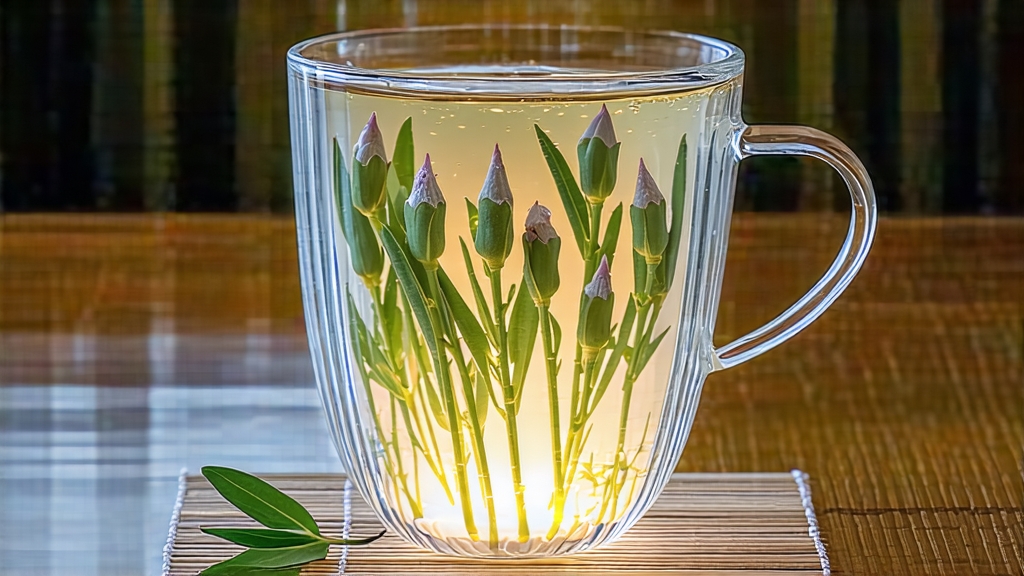
White Hair Silver Needle—Bai Hao Yin Zhen in Mandarin—is the most aristocratic expression of Chinese white tea. To the uninitiated it may look like a handful of dull, slightly fuzzy twigs, yet the moment hot water kisses the buds they illuminate, releasing a liquor the color of early morning sunshine on pale silk. The aroma is barely louder than a whisper: fresh alfalfa, rain-worn pebbles, and a trace of watermelon rind that vanishes before you can name it. One sip and the tea seems to disappear, leaving behind only a cool, expanding sweetness at the back of the throat, as if you had swallowed moonlight itself.
History: from imperial tribute to minimalist icon
The first written record of “silver needle” appears in a 1796 Fujian gazetteer, where county officials note that “downy buds, picked before the Qingming festival, were rushed by courier to the capital.” By the late Qing dynasty the tea had become so coveted that merchants in Fuding and Zhenghe counties sealed individual buds inside hollow bamboo tubes lined with rice paper, a packaging method that doubled as currency along the Min River trade routes. When the last emperor abdicated in 1912, displaced court tea masters carried the technique to the mountains of northern Fujian, refining the withering process inside cliff-side huts where mountain breezes replaced the laborious charcoal firing used for green teas. Thus White Hair Silver Needle survived dynastic collapse, war, and revolution by becoming humbler: no roasting, no rolling, no artifice—just air, time, and the patience of people who understood that restraint can be the highest form of luxury.
Terroir: why Fuding tastes like chilled nectar
Authentic Silver Needle comes only from the Da Bai (Big White) and Da Hao (Big Hair) cultivars planted on red granite slopes at 200–600 m elevation in Fuding and Zhenghe. The soil is acidic, rich in potassium and manganese, and laced with quartz that reflects daylight onto the underside of leaves, increasing amino acid production. Morning fog rolling off the East China Sea slows photosynthesis, thickening the pubescence—tiny white hairs—on each bud. These hairs are not merely decorative; they store the volatile terpene geraniol, which converts into hot-weather nectarines after gentle oxidation. Move the same cultivar fifty kilometers west and the liquor turns papery; move it to Yunnan and the buds grow longer but lose their melon note. In short, Silver Needer is the liquid photograph of a very small, very specific place.
Plucking: one dawn, one bud, seven days a year
Harvest begins when the air temperature hovers between 15 °C and 20 °C, usually during a ten-day window straddling the Qingming festival (early April). Experienced pickers work backwards from sunrise, selecting only the unopened needle-shaped buds whose tip is still tucked inside the first leaf scale. A full kilogram of finished tea requires roughly 30,000 buds, all plucked with the nail of the thumb and forefinger to avoid the faint bruise that metal shears can leave. The pluckers’ baskets are lined with fresh banana leaves to keep the buds cool; any rise above 25 °C will trigger enzymatic browning and destroy the silvery luster. By 9 a.m. the mountain roads echo with the soft clatter of bamboo trays being loaded onto three-wheeled trucks that crawl to the withering yards before the sun grows harsh.
Craft: the art of doing almost nothing
Unlike green tea that is “killed-green” with heat, white tea is coaxed into maturity by nothing more than air and the skillful rearrangement of molecules. The freshly harvested buds are spread in a single layer on bamboo sieves called “water screens,” each sieve holding exactly 0.8 kg so that convection can slip underneath. For the first six hours the tea rests in shade while moisture drops from 75 % to roughly 55 %. Then the screens are moved into a sun-lit corridor with louvered walls; indirect light warms the buds to 28 °C, activating polyphenol oxidase that rounds off grassy edges. Every forty minutes a master gently lifts the corners of the screens, allowing the buds to tumble a quarter turn—an action known as “awakening the silver.” If the afternoon humidity spikes, workers wheel the trays into a cavernous loft where pine